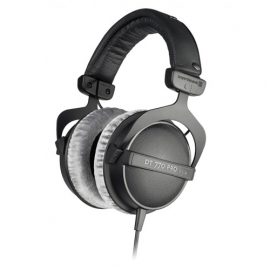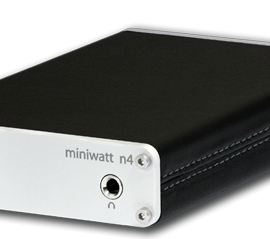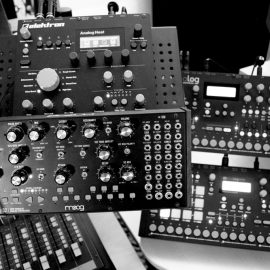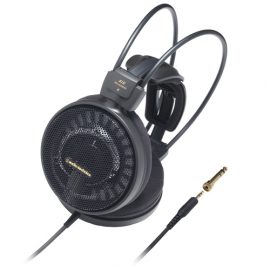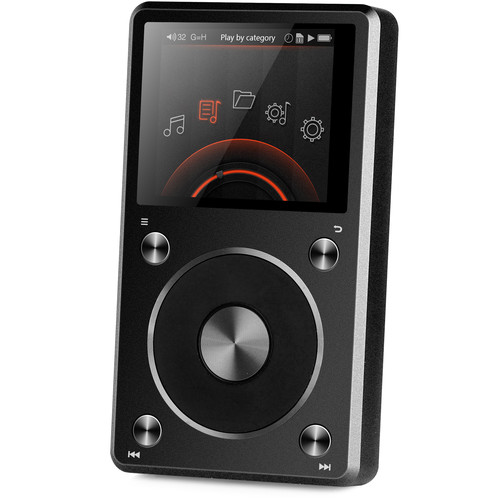
It’s been awhile since I’ve covered some equipment on these pages, but then again, it’s been some time since I have acquired much hardware worthy of a share here. I’ve had my eyes on a portable high-res player for some time now, but either due to the confusing price points (some sold for $100, others for over $1,000), or due to immature product lines, I decided to wait it out a bit. Finally, when the second generation wave of devices hit the market, I decided to buckle down and explore the craze. My requirements were actually pretty simple – I wanted a device that played audiophile grade files, was [somewhat] easy to use, and definitely portable. I tested out a few various players on location, and decided to go with the Fiio X5.
I’ll be honest, even after the second generation release, there are many things that I don’t like with the player. I’m going to open up this review with all of the negatives, things that often drive me crazy, and hopefully leave the review on the positive note, because overall I’m still very happy with the device. Keep that in mind as you read this – I still recommend it very much! This review comes after a month worth of listening (almost on a daily basis) on the go, and in my office.
First thing to note – it’s now yet another accessory to carry with you in your pocket (assuming you already have an iPhone or an Android device), and right away you have to weigh the extra burden of that. The X5 is pretty small, slightly thicker than the classic iPod (4.3 x 2.5 x 0.6 inches) and is weighs about 5.8 ounces [12% smaller and 15% lighter than the 1st generation]. The X5 gets pretty warm after about 15-20 minutes of listening, and that could be a bit annoying, as the constant heat is slowly roasting your lap or your bum (depending which pocket you store it in). The additional clear plastic casing is helping a little, but other than that, prepare to be physically reminded of the player all the time.
The buttons on the player are a bit quirky, sometimes a bit useless in terms of navigation, and as expected, after about a month of use started to click (or not click) because some tiny particle probably got in between the openings. The wheel is only rotational (can’t press up or down on it), so it’s almost a copy of an iPhone, but not quite. The good news is that if you have a pair of headphones with a built-in remote control, you can pause, skip, rewind, etc. (CTIA-standard in-line remotes); but wait – no volume control!?! That’s actually another pretty big annoyance right there – I have to take out the device (or fumble in my pocket) to control the volume on a particular track. Not sure what technical limitations prevented FiiO from implementing the remote volume control, but this one drives me absolutely nuts!

Finally, the biggest pain (and I knew this going into it from the beginning) is the actual interface. The navigation is clunky, with no easy way of getting to the home screen, split menu of playing by category (album, artist, genre, etc.) but only after updating the “internal” media library through System Settings; and a separate menu tree to browse the files (as stored on the SD card). I ended up using mostly the latter, manually arranging my collection to my own liking, which basically sums up to constant file management. To add to the confusion, there are two separate Settings menu (one for “Play” and one for “System”). Honestly, the whole thing is a huge pain – the only good news here is that I mostly suffer through it prior to queuing up the album. I also recently discovered that JRiver Media Center can “sync” albums and playlist with this portable device, so hopefully the library management will become a bit easier.
OK, now that I’ve got some of my bitching out of the way, it’s on to the positives, because in my opinion they still outweigh the above, enough to recommend this product to my friends (and you)! First, the quality of sound is amazing, and is immediately noticeable from the very first play. The dynamics are wide, attributed to a dual voltage switching between gain levels. The player is also a great headphone amplifier, so if you were carrying another portable device before, this is a must. With native DSD128 decoding, the player supports native SACD ISOs. It also seamlessly plays WAV, FLAC, APE, WMA, AIFF etc., at up to 192 kHz/24 bit (and yes, MP3s also work of course). The quality here is stunning, and for the first time you can truly enjoy your hi-fi sounds on the go. Let’s dive a bit into the guts. The X5 packs the top-flight PCM1792A Texas Instrument DAC chip, coupled through dual channel OPA1652 I/V converter, followed by OPA1612 low-pass filter and OPA1612 amplifier (realizing something like 0.00005% extra low-distortion). The headphone output stage is run on two BUF634U current amplifiers, delivering highly dynamic musical performance and a punchy bass!

The X5 comes with a separate line-out (in addition to the headphone jack) and I use that in my office, through another vacuum tube headphone amp, to playback my library when I’m just sitting down. The jack also doubles as a digital (coaxial) out, if you want to use a different DAC [I haven’t played with that yet]. There is no internal storage on the device (the X3, I believe, comes with 128GB), but it does have two separate MicroSD slots, supporting (at the moment) up to 128GB each — you can find these cards for just around $30 (USD) these days [I recommend SanDisk or Samsung for reliability]. The X5 can be easily charged via USB, which also can be used for all the data transfer (no need to pop out the MicroSD cards each time). Your storage is basically expendable now, and if you’re as obsessive and compulsive as I am, you can manage your on-the-go libraries to your heart’s content. And oh, if the player is connected to a computer, you can use it as an external DAC (better than your internal chip!).
All that means, that even with the annoyances, the FiiO X5 opens up your music world into a whole other dimension. You’ll want to re-listen to your entire library from scratch [I guarantee it!], since for the first time ever you’ll hear things you’ve missed before (unless, like me, you have a very nice setup at home already). All that, at a very reasonable price point ($299 USD last I checked). Sure, I’d like the next firmware upgrade to resolve a few of my UI issues, but honestly, that’s not why I bought the X5 — I bought it for the sound it promises to deliver, and that it does 100%. For those interested in spending a bit less, there’s also the X1 ($99) and an X3 ($199); [the X7 is at $599]. Sorry, Astell&Kern, I’m not ready to drop $3000 on a portable player (yet). Other brands I’ve considered: Onkyo, HiFiMan, Sony Hi-Res Walkman, iBasso.
